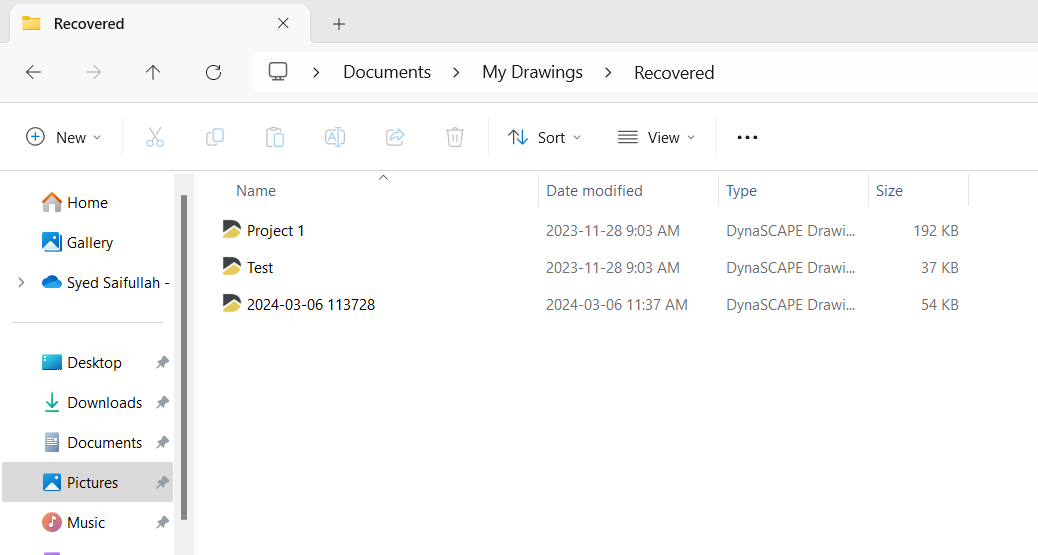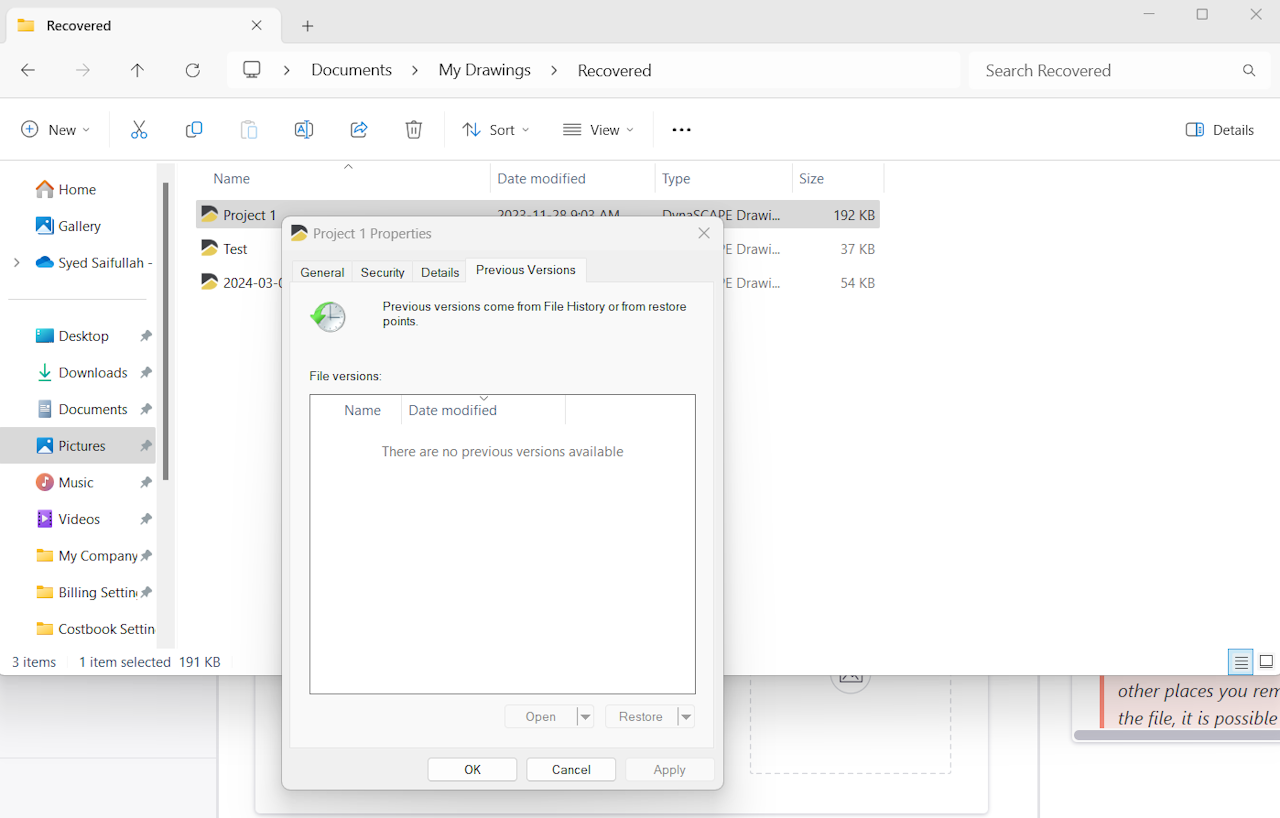

Recovering your Drawing File
If you have experienced the unfortunate event of a drawing file becoming corrupted or lost, here are some steps you can take to try and recover your work:
Check the Recovered Folder:
Navigate to Documents -> My Drawings -> Recovered. This is often the best place to start when searching for a recovered version of your file.
Check Previous Versions:
Right-click on the drawing file.
Go to Properties -> Previous versions. This feature might have saved an earlier, uncorrupted version of your drawing.
Preventing Future File Corruption
While it is difficult to pinpoint the exact cause of file corruption, there are several practices you can follow to minimize the risk:
Avoid Working Directly from Removable Devices:
Do not work directly from USB keys, external hard drives, or servers. Transfer files to your local drive before working on them.
Use Shorter File Names:
Keep file names, including their location paths, under a 200-character limit to avoid issues.
Manage Raster Images:
Do not add large raster images to your drawings.
Remove unnecessary background rasters when they are no longer needed.
Keep raster images small and manageable.
Properly Shut Down Your System:
Always save and close your drawing before shutting down your operating system.
When using a virtual system such as Parallels or VMWare, do not close the virtual machine abruptly. Instead, use the Windows Start button and shut down properly.
Copy Drawings to New Prototypes:
If you notice drawings becoming corrupt, turn on all layers and copy the drawing to a brand-new empty prototype.
Optimize Drawing Practices:
Hatch and cluster in small areas to reduce file complexity.
Use the Delete entities tool instead of relying on Undo to remove items.
Clean Up Files Before and After Import:
Clean up AutoCAD files using the troubleshooting information available in the Design user manual: Importing AutoCAD files.
Maintain System Health:
Regularly clean up computer viruses and re-image your system if the registry has been compromised.
Ensure that your computer meets the system requirements. For more information, refer to this resource: System Requirements.

